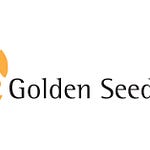Strategic planning is a formidable task. It’s downright daunting in the current macroeconomic climate. How can you say with confidence, “Here’s how we’re going to grow from $X million to $2X or $3X million in ARR”?
This question was at the heart of my conversation with Marcus Bragg, COO at Netlify, which was named to the Forbes Cloud 100 list of the world’s top private cloud companies. In this discussion, we covered questions such as:
How do you align with your board on a revenue plan?
How do you incorporate riskier bets into the plan — especially when the macro-environment presents more risk?
How do you motivate your team members to pursue moonshots while also not making them feel like they’re going to get fired if the experiment fails?
You can listen to the podcast or read the lightly edited transcript below. Let’s dive in!
Announcements
Sign up for the first-ever Generative AI conference! Use my personal coupon code JGENAI25 for a 25% discount. Speakers include CEOs and execs from Jasper, OpenAI, Stability AI, Github, and Cohere, and other thought leaders!
Leadership Roles
Here are a few leadership roles and other key roles at companies that I’m excited about.
Airplane: Sales Engineer, Technical Content Marketer, Solutions Engineer
Arketa: Head of Demand Gen
Aviator: Growth Marketing Manager
Clutch: Head of Enterprise Sales
Explo: Head of Marketing
Jasper: Lots of roles across engineering and product!
Meez: Head of Growth
Motive (formerly KeepTruckin): Chief Customer Officer - contact john.gleeson@gomotive.com
mParticle: Chief Revenue Officer
Pocus: Founding AE and other roles in Customer Success, Biz Ops, Demand Gen here
Seso: Enterprise AE, Enterprise CSM, and other roles
Transcript
Allison: Marcus, thank you so much for joining us on the podcast today to talk about growth endurance. I'm excited to get your perspective.
Marcus: Allison, thanks for having me here. Excited to be here.
A: To start us off, can you talk a little bit about your role as well as your company — what it does, the product, and a bit about the go-to-market context?
M: Yeah, happy to. Marcus Bragg, I'm the COO at Netlify. We are making it easier and faster for companies to build modern sites, stores, and apps.
A: Many companies have been in the thick of their strategic planning processes for a couple of months and, if they’re on schedule, they’re now putting the finishing touches on their 2023 plan.
Strategic planning is obviously a process that's very relevant for ensuring growth endurance. You're trying to make sure that you can grow fast on an already large ARR base. Netlify's a pretty large company. I'd love to hear, how have you approached strategic planning and making sure that the organization is set up to grow fast next year?
M: Great question. It's always fun when a company's in their Q4, you're finishing for a strong end of year, and then at the same time, you're deep into planning the new exciting levers of growth in the following year.
If you look at the writings of Mary D’Onofrio at Bessemer on growth endurance, there's a classical 30% reduction in growth rate each year. But most of us in the SaaS space are trying to accelerate growth. So you're always trying to balance those two things: your “known knowns,” and your “known unknowns.” How do you build a strong base plan that will set you up for success and that is realistic, and then also set stretch plans, which might incorporate some known unknowns that are new initiatives that you're also going to try, in addition to what's working already.
A: I’d love to get into the mechanics of all this at a really granular level, because I know people really appreciate when we offer specific actionable advice. Although I know Netlify is larger than this, let's say we're at 30 million in ARR and we're trying to double to 60 million in ARR. I often see companies create a revenue waterfall — a bridge from 30 to 60 million, with different components in this waterfall chart that are different revenue sources. Are you constructing that kind of revenue waterfall as part of your strategic planning process, and how do you get conviction about where the components of your revenue waterfall are coming from?
M: Yes, we want to know, what are those levers of growth? You usually have four or five that are, again, these known knowns, and then you're building out another five to 10 that are known unknowns. For us, we're trying to get conviction on, what are the products and services that we know are selling today? Where are we seeing a repeatable pattern?
If you’re at $30M ARR, you're starting to get an understanding of initial segments and your selling motion. Is it direct or indirect? Is it PLG bottoms up, or is it enterprise tops down?
First, understand the levers that are working today that you can double-click on, either from a sales and marketing perspective to say, "We've got a repeatable motion here, which we can go add more funnel to. We can add more reps on the account management side. We're actually starting to see great expansion rates on a use case or on a product set."
Then maybe we want to create repeatable growth by making territories smaller and adding more reps as part of that, or maybe it's adding more professional services, or customer success managers that are increasing your renewal rates, and your expansion rates. It doesn't always have to be more reps; it can be other resources that drive success, too.
Then as we start really getting into, what are Product and Eng coming up with next year, where are their big bets, and what do we really think as you're finishing the year, and launching the new part of the year, that are the new product initiatives that we have strong conviction in as additional growth levers?
A: You mentioned needing to know if a motion is repeatable or not. How do founders know if a selling motion is repeatable?
M: It always starts with data. You start to see the same customers coming in. It might be in a similar set of logos is the tip of the iceberg. Is it in a certain segment? Is it a certain persona of a buyer that you're breaking through to?
For us, a lot of our successes come bottom-up from the developer. That developer is using the product for their personal project, and then when something at work happens, they bring it into work. They’ll say, “This product works really well. It's going to allow us to publish sites faster, improve performance, and improve conversion rates and revenue of customers." Then the execs get really excited.
In other companies, you may find it is a strategic initiative than coming top-down. For example, it could be Compliance or Regulatory that is driving it as a result of a board room conversation.
Get into your data and notice the trends. What types of customers do you notice? How are they using the product? If you have a trial motion, how long did it take from the trial to when they raised their hand and said, “I want to talk to a sales rep”?
The sooner that you as a founder can figure out those flows and instrument them, the better.
A: Let's say that we believe that a motion is repeatable. What goes into figuring out a long-term forecast? How can I get conviction that the sales number that I'm plugging in for Q4 of 2023 is real?
M: Obviously, at this point, we’re feeling we have a repeatable motion for our products and services; we’re starting with that “known known.” We understand the lead sources, the marketing motion, the channels. Regardless of whether you’re using last-touch marketing attribution, first-touch, or multi-touch, you need to know the key drivers of new pipeline.
You may have an account-based marketing model if you’re selling into a business line leader or a VP of Engineering. In that case you’ll have named accounts with sales, which will align with marketing on the targeting. How many new MQLs and how much pipeline will be needed to hit the plan, and what levers can we pull? I often like to look at what performance improvement can I make with the SDR team: “Can I get an increase in conversion from MQL to SQL?” Then, once the lead arrives with the sales team, how can I improve the conversion rate from stage one to five? Those conversion rates can typically be improved through better process and more training.
Then the CEO usually says, "Okay, but I need to grow more, so how do we do that?" At that point we move to our “known unknowns”: How do we expand into new markets? What new partnerships can we build for indirect sales?
Another question is, will your marketing be purely digital, or will you do field marketing as well? Certainly, everyone is really challenged right now with in-person events. There's been mixed success. If there was a connection within a community from before the pandemic, then we see some of those events continue, but still not with the same success. Anecdotally, new events have been very unsuccessful. Companies are now making their events remote-only or else don’t do them. Especially with the current market conditions, I think event budgets will be pulled back.
A: You're obviously a very community-focused company. I'd love to get an understanding of how you think about the role of community in understanding your funnel at this stage in your company. A lot of companies tend to become more focused on their enterprise-selling motion over time, and so the reliance on the community may not be as critical later. But I'd be curious to get your thoughts on how much community matters in the later stages of company growth.
M: For us, community is so important as we look at the world of front-end developers. The latest reports show there's about 21 million JavaScript developers out there. We have about 3.5 million that have been on the platform, signed up for an account. They’re working on a lot of personal private projects, such as their own personal blog or site, on our free plan. So we’ve spent a lot of time on that.
Every couple of years, there's a new JavaScript framework that emerges. Some spike and then go away. So we actually invested in an open source team inside Netlify that is working upstream with those developers to understand what the market really needs from a given framework. By the time that a developer is using that framework and starts to work with Netlify, it's an amazing experience on the platform.
A: Do you track growth in the size of your community as one of your core KPIs? And how does that growth influence your conviction in your revenue plan?
M: Obviously growth of new signups at the top of the funnel is one metric we look at. But we want to break down the usage. We have three tiers to stratify users from “light user” to “heavy user.” We want to understand those segments in more depth. And those developers don't want to talk to salespeople, so we need to look at the data.
Then we ask, how do we improve the product, the docs, or our external communication within the communities, to increase adoption through self-service?
A: Going back to forecasting your revenue plan for the year, I see a lot of companies overweighting their Q4 in their revenue plan. I'm seeing you laugh, so maybe this is something you've seen before.
M: What? That's never happened before.
A: Of course! There's a temptation to overweight Q4 because, of course, we all know that Q4 tends to be a bigger quarter for real reasons. Companies are trying to spend the rest of their budget, their annual procurement processes may happen then, and sales reps are motivated to make their annual quota.
But on the other hand, there can be a temptation to rely too heavily on Q4 because you don't want to disappoint your board early in the year. You're trying to defer the disappointment.
How do you know what counts as over-reliance on Q4 versus other quarters?
M: If you’re under $100M in ARR, you may be setting an annual plan, but you’re probably looking at it in six-month increments as well — because of the agile development cycle, and what's happening in the market and the competitive landscape.
We need to be candid with our boards about our confidence level. For example, “We're 90% confident about the first half. If those leading indicators and lagging indicators hold, then I'm 85% confident on a Q4, but if those come up short, then we're going to have to talk about a change in the second half.” Certainly with the headwinds everyone's facing right now in the market, it’s important not to kick the can down the road by saying, “Everything will be great in Q4.”
A: How do you translate your revenue plan into the actual plan for your sales team in terms of how many reps you need, what their quota should be, and territory assignment?
M: You need to analyze it top-down and bottom-up. Depending on how much we need to grow this year and our target burn ratio, there is a certain spend envelope that we can afford. Then we can create a top-down plan for the sales team.
Then we do the bottom-up analysis. “What is our productivity per head on new business, account management, and channel? Or for those companies that have a self-service model, “What is the trial conversion rate?”
Then we start seeing where the miss is. There will always be a gap. You'll always come up short initially. Then you need to explore the “known unknowns” to plug the gap.
If you're mid-market, you're usually using a 5x ratio on OTE to quota. If you're a mid-market rep, on average, your quota is $800K to $1M per year. If you're an enterprise rep, you're at $1M to 1.5M, depending on the ASP and the sales cycle of your products.
You can easily model the growth in your sales team in regions and segments you’re familiar with. But then you have to figure out how to apply that to a new market. For example, let’s say we’re going to Europe this year. How long will that take? It always takes longer than you think to find the people and launch. Is marketing able to provide enough air cover? How are we aligning reps’ quotas so that we don't burn them out before marketing has had a chance to really launch?
Then you should get into the units. I’m a big believer in looking at the units, understanding what a human is capable of doing in a given period. How many deals can they do, given the leads we believe we can give them? You’ll need a great sales ops team to help you with this, or if you’re small, your finance team can step in.
On the account management side, you need to model out your churn, contraction, and upsell, by segment. That helps build your confidence in the overall growth rate of each segment.
For most SaaS companies now, certainly ones that have some sort of PLG motion, it’s very common that half of closed deals come from the prior quarter pipeline, and half is new, in-quarter. That changes the calculation for the required pipeline multiple coverage going into a quarter.
A: What should you assume for the average percentage attainment by your reps? Setting quotas is one thing, but then you've got to make some assumption around what percentage of your reps actually obtain that quota, or what percentage overall of the dollars of those combined quotas do they achieve.
M: In general, you should plan for 12-15% over assignment. That takes into account the natural turnover of people that happens at every company, as well as the risk of entering new markets or segments. Can you get to a point where you've got 60% of the team at greater than 80% attainment? That way you've got a strong healthy culture of success. Then can you get somewhere between 30-40% over 100% attainment? There are a lots of statistics out there that say 60% over 100% attainment. When you really dive into companies, I rarely see 60% of the team doing this. But I know there's lots of research out there on that.
Your targets help create a culture of success within your sales and marketing teams. Then how do you create stretch goals? I think that's where the art comes in with the science of setting quotas and targets, because if you set them too high out of the gate in Q1 and fall on your face, it makes for a long year.
A: You mentioned earlier account expansion as a potential part of the revenue waterfall. Net dollar retention can be very difficult to forecast, for all sorts of reasons. For example, in the early days of a startup, they might have introduced very preliminary pricing, and then they're easily upgrading customers to larger ACVs over time — a tailwind that won’t last forever. Then as you become more mature as a company, you might have a product that you can now sell enterprise-wide, and so maybe in other ways, expansion as an opportunity might be greater as you grow. How do you think about forecasting it and making it part of the revenue waterfall?
M: Great question. If you’re an earlier-stage company, partnering with your finance team or product team to figure out where is the expansion coming from. So many companies have seat-based pricing, or some unit-based consumption pricing. Are you actually getting more volume? Or is your actual net dollar expansion, as you said, coming from the seat price being originally $39, and now it's $99? We're not actually getting more penetration into the account, we're just getting more wallet share from that single seat. As you said, that kind of expansion can make it seem like your success is repeatable, but after a two-year period or so, you'll have maxed out that growth in wallet share, and you'll hit a ceiling.
Do you actually have the repeatable land and expand motion in play? What really drove the net dollar expansion? Are we expanding across the company? And those answers are usually different by segment.
A: I know that annual planning can be especially stressful this year because there's so much uncertainty in the macroeconomic environment. There's a big question as to how much companies are cutting their software budgets. With uncertainty around where interest rates and inflation will go, people are wondering, "How can I create an annual plan now?" Especially startups, which are used to thinking more on a shorter-term basis and more iteratively. Do you have any recommendations for how companies can get comfortable setting an annual plan?
M: We've been talking about that a lot internally as well, and certainly within the networks of the other execs that are planning right now. I think the biggest recommendation I have is to get the board comfortable with, "Here are the known knowns. Here's where we feel we have a repeatable go-to-market motion, a repeatable R&D product launch motion. Here's what that looks like for the year, and these are our known knowns. Either we can do more of that, or we can pursue unknown unknowns — expand into a new geography, etc.”
For the unknown unknowns, have tight KPIs for the leading indicators that can tell you whether to keep funding an initiative or to shutter it. Your board will want clarity in advance on the criteria for spending more on an initiative. In general, you need to know at what point it makes sense to become more cash-conscious and prioritize efficient growth.
A: I love how you described your approach to the known unknowns, in terms of very carefully monitoring the leading indicators that you could invest more in or turn off the experiment depending on how things are going. I see growth-stage companies sometimes struggle to set targets for moonshots, which are perhaps a type of known unknown. They're big areas of innovation, and they're totally new — like a startup in itself. You're trying to figure out how to set a target for it. But at the same time, people internally may not be comfortable taking on that number. They may wonder, "Am I going to be fired if this experiment doesn't work out?" So how do you get comfortable picking a number that defines success and then holding people accountable for it?
M: For some moonshots, putting a number on it is almost setting yourself up for failure. Define what is the work that someone can totally lean into and feel like they can’t screw up, while knowing that they're not going to get fired. What is the outcome that we want to see in these next three weeks that would tell us, "Yes, let's keep going." The short time period is essential. No one wants to work on something for three, four, five months and then come out the other end and feel like it was a waste.
When we run internal hackathons, and we give teams little guidance but dedicate, say, a week to get something done, they come out with amazing things. But then on the other hand, we're like, “This initiative has to drive X million dollars this year. It's going to take four months to roll out.” Then we create all these checkpoints, and it seems like it always misses the target. How do you get a small set of people very motivated to achieve the smallest increment of success that we can define, and then continue to greenlight that? Or if it's not successful, shut it down and move on to the next thing.
If it's a moonshot unknown, attaching revenue is probably the mistake in the first place. If the goal is too far away, that creates a problem. We need to create opportunities for quick wins.
A: Many companies are doing their best to adapt to 2022 versus 2021. In 2021, their boards might have been totally fine with them spending as much as they wanted. In 2022, companies are hearing a different direction from their board members.
What advice would you give to a company that has a very important innovation that they believe is critical to their strategic positioning in the future — and critical to becoming a $100M+ ARR company growing at 80% — but it would require a lot of cash burn next year?
M: A lot of companies are going through this right now. They’re figuring out their big bets. The question is, do you have a solid strategic plan for how this innovation will accelerate growth? But even if you have a good answer to that question, it can’t be all about ivory tower strategy. Right now, if the innovation is not adjacent to your core business and it’s not accelerating, it's tough to stomach right now. Few companies are fundraising. You're looking at how to extend your cash. You have to double-check, is this the right time for the strategic moonshot if it doesn't have some overlap to what are the current working levers of growth?
A: Great advice. This was an awesome conversation. Thank you so much, Marcus.
M: Allison, happy to be here. Always great to spend time with you.











